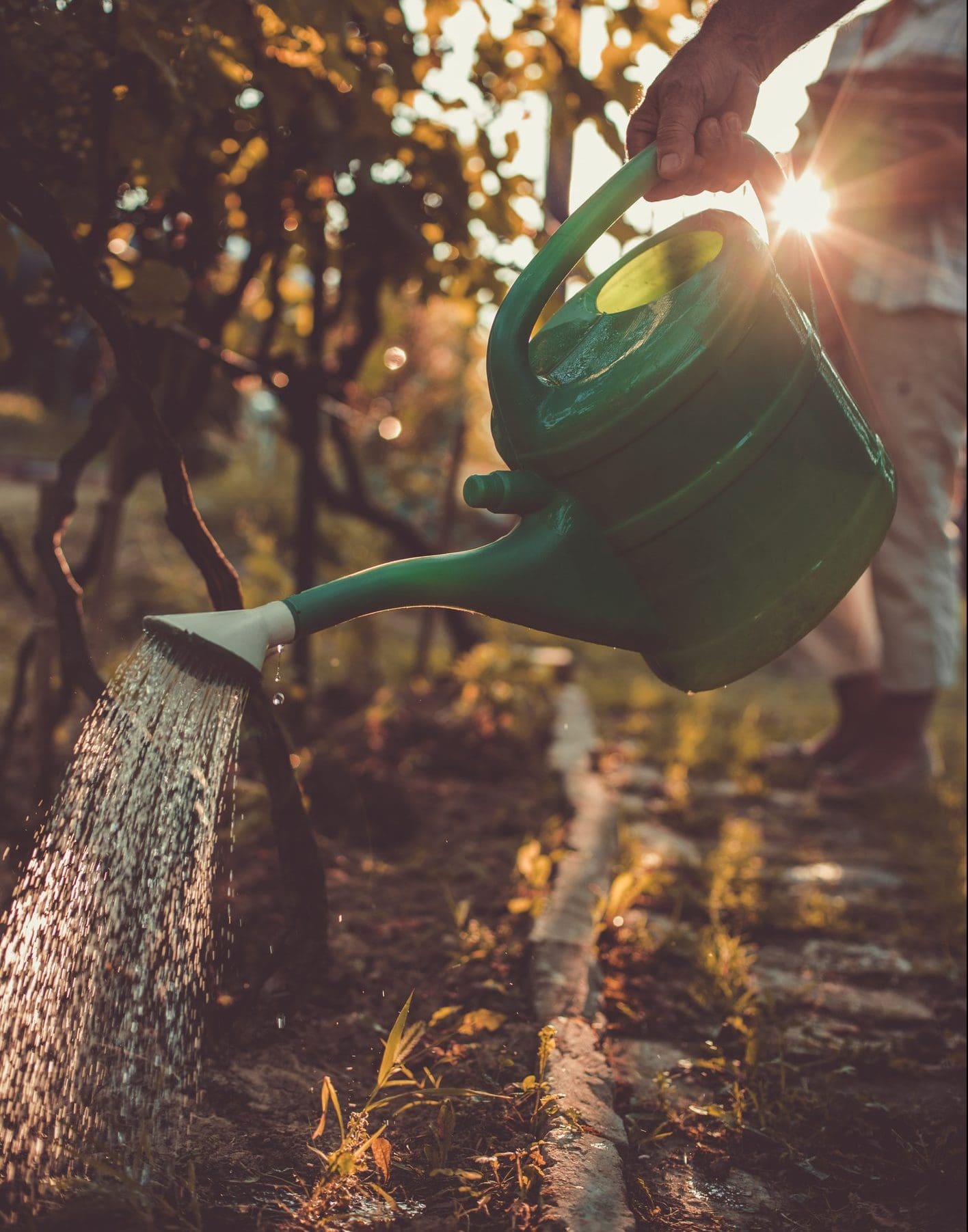Everyone can always use some good tips to keep their landscaping growing and green! That’s why I have decided to put together a quick blog with some tips on weeding your garden and watering your lawn. Sure they seem like pretty easy tasks, but like with everything else, there are better ways to go about it, so that you don’t harm your plants and landscaping without even knowing you’re doing so. It’s a lot easier than you think! Here’s what you need to know:
How to Water Your Lawn This Summer:
Summer can be an extremely stressful time for plants. One day it’s a comfortable temperature and the next it’s super hot with high humidity. There could be spells where there’s no rain for a week and a complete downpour for two days straight. Keeping up with regular lawn maintenance can significantly strengthen the roots of your grass, so when it’s hit with the unpredictable weather, it can handle the stress. Here’s a quick guide to remember:Time of Day: The time of day is very important for the health and wellbeing of your lawn. The best time to water is in the early morning before the sun (and temperatures) rise. Usually, try to water around 6 am to 10 am at the very latest. The water has a chance to soak into the ground and cools the grass down to combat the afternoon heat.
How Often & How Much: This is where a lot of our clients get a little confused. Unfortunately, there isn’t a solid answer of when and how much. As a general rule, the lawn should get about 1 to 1.5 inches of water a week. This could be from your sprinkler, hose, or Mother Nature herself with rain. You want the soil to be wet about 6 inches to get to the longer roots.
Sprinkler vs. Hose: This is a personal preference. The sprinkler is easier to work with, especially when you have a larger lawn to deal with. If you have a smaller lawn a sprinkler could be more of a hassle.

Do I Have To Water?: Again this is a personal preference. If you feel that your lawn is looking healthy and thriving naturally then don’t worry about watering. If you start to notice your lawn looking lackluster or brown spots are starting to appear, you’re going to need to set something up.
How to Weed Your Garden Correctly
While you should keep after the weeds regularly, the summer is when they can really get out of control. Between the summer heat, the moisture from the humidity, and thunderstorms, weeds are at their prime. Before you know it one or two weeds could turn into several almost overnight. The key is to stay one step ahead of them. Thankfully once you get a handle on de-weeding, it’s pretty easy to keep up with it. Here’s what you need to do:

Pull them ASAP: As soon as you see anything that’s resembling a weed pull it. A weed can be anything that’s not wanted in your garden. Most specifically it would be dandelions, pigweed, purslane, bindweed, and more. If you don’t like how it looks, it doesn’t need to be there.
Don’t let the seeds in the soil: De-weeding can take time, especially if you have a lot of them. Their roots are extremely strong for such small plants. If you can’t pull everything up, snip off the flowers. This will prevent more seeds from falling into the soil.
Mulch it up: Mulch not only protects your flowers and soli, but it prevents new plants from growing from a seed. In this case, it would be the unwanted weeds.
Check often: Once you’ve gotten rid of the current weeds, periodically check to make sure new ones haven’t sprung up. Your soil is littered with unwanted seeds from birds and animals dropping them. If you don’t keep after them, they could pop back up and smother out the rest of your garden. This will be the easiest part though. You’ve already done the hard work with the first de-weeding.
